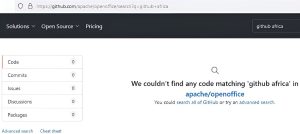Atlassian co-founders & co-CEOs Mike Cannon-Brookes & Scott Farquhar.
Data is enormous. Enterprise organizations today are faced with a big decision in terms of how much data they decide to capture. Ingest, manage, analyze, store and push forward into other systems of record, systems of knowledge and systems of intelligence. Because almost every single action (by a human, machine, software agent or wider application) creates log file-level records alongside richer information footprints that track what data sources did on any particular day, businesses must now decide what information it lets flow out untracked (literally down the drain) and what it decides to hang on to.
It would be easy to say ‘let’s have it all’ and attempt to work with all the data that a digital business generates, but cloud computing can be expensive and keeping everything (just to be sure) is cost-prohibitive, physically impractical and strategically bloated.
We need a way to know which data matters, what sources to pay the most attention to and how we should navigate various information domains. The answer – as is the norm these days – lies at least in part in the use of generative Artificial Intelligence (gen-AI) and its ability to help us recognize patterns so we can filter and choose more accurately (and more rapidly) than humans are traditionally capable of.
Enterprise search & knowledge discovery
Team collaboration and productivity software platform company Atlassian thinks it has a way to harness human-AI collaboration and more directly understand which data sources an organization should prioritize and focus on with its Atlassian Intelligence technology. Initially launched a year ago, Atlassian Intelligence (the company’s central name for its AI brand) is designed to help teams boost productivity with AI and help solve the highly complex problem of enterprise search and knowledge discovery.
With so many technology platforms installed in a typical enterprise (large companies with over 2,000 employees use over 230 apps on average), a central requirement now is the ability to analyze not just data in the ERP or CRM system, but to be able to perform data analytics across all domains, in all applications, at all times.
“Our goal is to enable a business to turn Atlassian and third-party data from across an organization into actionable insights and knowledge-driven decisions. In this age of generative AI, every team member deserves to have [data] superpowers… and we want to make sure we deliver them,” said Jamil Valliani, head of product AI at Atlassian.
Analyst house Gartner suggests that around half of digital knowledge workers struggle to find information or data needed to effectively perform their jobs. Why is such a seemingly simple and straightforward task so tough? With the vast bodies of enterprise data that exist, valuable knowledge gets trapped in information silos and that creates an access logjam, a data chasm and a cost disadvantage. To make life tougher, workers using one application very often need to switch applications to get data and alerts from another piece of software to understand how to act. Is that a reality? You know that ‘can I put you on hold’ experience when you’re speaking to a call center and you’re wondering where the operative has gone off to for ten minutes as they fiddle with ‘other systems’ – yes, it’s a reality.
Enter… Atlassian Rovo
Atlassian Rovo is now proposed as an antidote to data discovery woes depicted thus far. This is a new product designed to accelerate finding, learning and acting on information dispersed across a range of internal software tools inside organizations. It works with specialised functions designed to find data, tools and platforms to get contextual and relevant results. It has been built to learn and gain an understanding of a company’s data through AI to discover patterns and the use of ‘knowledge cards’ (immediate facts-based answers to search queries) and AI chat for deeper data exploration. It also works to help ‘act’ through the use of specialized agents that sit inside workflows to handle time-consuming tasks, complete projects and help solve complex problems.
For wider contextual understanding here, knowledge cards provide in-context snapshots of specific information about projects, goals, new teammates etc. based on an organization’s enterprise data. Teams get immediate answers as they work and knowledge cards get smarter as more data is added to the Atlassian teamwork graph.
“Today we need to realize that AI is only as useful as the data it taps into. We’ve made it our business to understand how teams work [so that our platform is] able to grasp common patterns, anti-patterns, organizational structures and lines of communication. All that knowledge has been poured into a proprietary common data model we call ‘teamwork graph’ and this is the secret sauce that makes Rovo and our other AI capabilities so special. Our teamwork graph technology pulls in data from Atlassian tools and other SaaS apps, unlocking a comprehensive view of an organization’s goals, knowledge, teams and work. With every new tool connection, team action, and project event, teamwork graph draws more connections and expands its knowledge to deliver increasingly relevant results,” explained Valliani.
There’s a key information management trend here that we can see playing out across data analytics software vendors, across Enterprise Resource Planning (ERP) & Customer Relationship Management (CRM) specialists… and outward across low-code platform companies, automation specialists and everyone in between. As much as organizations love to embrace and capture data (remember our let’s keep it all option earlier?), they often end up with a twisted fabric of data repositories in multiple formats, shapes and speeds that are tough to navigate through. Atlassian says it has seen this modern ‘phenomenon’ happen and built Rovo Search to surface the most contextual and relevant results, no matter where the data is stored or the format it takes. It understands what teams are looking for and provides insights from across your enterprise systems.
How Rovo works
If a user wants to know if a project is on track, Rovo can provide an answer by searching across all Atlassian content as well as the third-party content selected – from issues in Jira to the myriad of files stored in Google Drive to the Sharepoint document the user has forgotten about. The company says it has been building ‘search’ to query custom in-house applications, such as those developed for finance or HR, to deliver relevant answers for any team or industry.
“When a user adds Atlassian Rovo to Jira or Confluence, they get enterprise search with semantic intelligence that is capable of tapping into information resources that exist right across their enterprise – essentially, Rovo is an enterprise knowledge tool that further helps unleash the power of teams inside a business,” said Rajeev Rajan, chief technology officer, Atlassian. “Users get Rovo chat, which enables them to perform a contextual search of an enterprise’s entire knowledge base – I mean everything from a Jira ticket to employee contacts to a marketing campaign information resource and so on. Significantly also here, users get Atlassian Rovo Agents i.e. software agents [functioning sub-components of software code] that work alongside their human owners as virtual team members – for example, a software agent might be used to carry out a code review for a developer and it can be set to a specific ‘tone of voice’ at every level from passive to personal to pirate, literally. We provide 20 Rovo agents out of the box, but our users create many more on the Atlassian Marketplace and customers can of course also develop their own. We have been surfacing AI in our platform for many years, but these latest iterations of Atlassian Intelligence represent something of a game changer for businesses in all industries.”
Rajan further points out that customers who don’t buy Rovo, but who do use Jira or other Atlassian products still get Atlassian Intelligence embedded throughout the platform. Rovo’s search is (understandably) governed at the point of set up by an administrator for each user so that it is permissions-aware to ensure employees are only able to search within appropriate boundaries. The Atlassian CTO explains that Rovo is one of the company’s ‘most ambitious’ products yet; as such, he explains that he is building what he calls a ‘world-class engineering team’ to tackle highly complex challenges with enterprise search and knowledge discovery to help customers accelerate the way they find, learn and act on information.
Users can use this technology to identify team members with the necessary expertise to contribute to a project’s success or uncover related topics to develop a deeper understanding of the project. Search helps teams find the exact information needed across huge volumes of complex data. Rovo Search can pull information from popular tools, including Google Drive, Microsoft Sharepoint, Microsoft Teams, GitHub, Slack, and Figma, to deliver comprehensive answers.
Permission-aware control
As suggested above, search results are personalized and contextual. Permissions are fully respected so employees see only the information they’re supposed to see, while restricted data remains private. Administrators have full control over the enablement of search connectors and data access. Rovo understands a company’s knowledge, people, processes and goals so teams can engage with enterprise information in innovative ways. Rovo not only helps teams find information but supports interactive learning for a deeper understanding.
With Rovo Chat, teams can engage in interactive conversations to ask questions until they get the answers they need, generate new ideas, get helpful feedback and resolve issues while they work. Chat is based on a company’s data and gets smarter as teams continue using it. When answering questions, Rovo surfaces related topics and follow-up questions teams can use to tease out more details – and it’s jargon-demystifier too. Agents aren’t just some souped-up version of chatbots insists Atlassian i.e. they bring specialized knowledge and skills to a wide variety of workflows and processes.
We’re at an interesting inflexion point with these technologies. Not because data-centric human-AI collaboration platforms are not advanced, they clearly already are. Many of the functions on offer here are evidence of arguably pretty progressive and in some cases even quite radical and experimental in terms of how they will now impact human workflows. We know AI is being applied to transform teamwork, that part is not in question.
Software agents beside humans
What might be more illuminating is the progression path that workers now take with these technologies and the way in which they now ‘graft’ and integrate them into the jobs they used to have, that they can now perform better. Remember, Atlassian said that Rovo Agents will transform teamwork with their ability to synthesize large volumes of enterprise data, break down complex tasks, learn as they take action and partner with their human teammates to make critical and complex decisions.
This means it’s now down to us, the humans, to embrace (or at least assess) or miss out on these tools.
Nobody wants to be put out of a job by AI because they didn’t at least try out the new automation functions on offer in modern enterprise software platforms, so many of which promise to enhance our workflows and make our roles more product and actually more enjoyable too. Go and hug a bot and make friends with its whole extended family.



